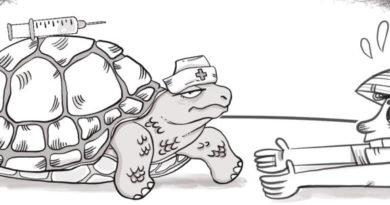KUALA LUMPUR, Malaysia: PROPERTY – Owning a slice of Malaysia
With burgeoning wealth all around us, why don’t more of us reach out to honestly partake in some? What are we afraid of? Malaysia has 32 million carbon-based economic units transacting everyday across the length and breadth of our beautiful land.
I’m referring to our diverse, vibrant, growing population that now stands at about 10 per cent of the US. When compared to the whale-like world’s largest economy, our smallish nation, Malaysia, is a minnow.
A country’s GDP or gross domestic product is a measure of all the goods and services in their finished form transacted within its borders in a year. Using the world’s de facto global currency, the US dollar, as a common yardstick, we’re able to estimate the size of each country’s economy.
Using the online resource http://statisticstimes.com/economy/countries-by-projected-gdp.php for its conveniently collated data, we learn that last year the approximate size of the global economy was US$78 trillion (RM306 trillion). The USA contributed almost a quarter (24.9 per cent) of that, US$19.4 trillion, while under 0.4 per cent or US$310 billion came from Malaysia.
Another way of looking at the relative size of the two countries’ economic footprints upon our globe is to understand our GDP is a mere 1.6 per cent of the US’s. As our population is 10 per cent of America’s, our per capita GDP is about one-sixth (= 1.6 per cent/10 per cent) of that of the US. (If we equate per capita GDP to an astronomical body’s gravitational pull, the US would exert 1g or the gravitational force felt at ground level on Earth while Malaysia would exert 1/6th of a g, which is what the 12 men who walked on the moon in the late 1960s and early 1970s felt on that stark lunar surface.)
According to a 2015 data released by the World Trade Organisation (WTO) in its World Trade Statistical Review 2016, three years ago Malaysia was the world’s 17th largest exporter and 19th largest importer. In contrast, our country’s position in terms of population is a distant 45th (https://en.m.wikipedia.org/wiki/List_of_countries_by_population_(United_Nations)). Clearly as a trading nation we’re super achievers. That’s something all Malaysians can be proud of.
Yet, while we may be justifiably pleased that as a trading nation we punch way above our weight class, in terms of per capita GDP, which is a close proxy for per capita income, we’re extreme lightweights. (For an excellent summary of the subtle differences between per capita GDP and per capita income you may enjoy referring to Don Siller’s answer at www.quora.com/Are-income-per-capita-and-GDP-per-capita-the-same)
When we look at our aggregate trade numbers, meaning our volume of total annual exports plus total annual imports, we’re comfortably a top 20 trading nation. That is no mean feat. It’s a testament to the tremendous vigour of our economy which stems from our unique demographic mix, our ambitious businesses and our fabulous geographic proximity to the world’s first (China), second (India) and fourth (Indonesia) most populous nations. (In case you’re wondering, the US is the third.)
Unfortunately, based on the International Monetary Fund’s ranking of countries by nominal per capita GDP in 2017, Malaysia was a dismal 69th at US$9,659, which was even lower than the whole world’s average of US$10,038! (Source: https://en.m.wikipedia.org/wiki/List_of_countries_by_GDP_(nominal)_per_capita)
Take home lessons
The two lessons I want you to derive from that slew of data is (1) trade is booming in Malaysia; however, (2) the average Malaysian is not participating in the wealth being generated by our multitudinous businesses.
What is needed is NOT more government interference through policies hijacked for political expediency; what is required is an improvement in the education of our young people.
For starters, elevating English, the lingua franca of international business and global science and technology, has to be accelerated within kindergartens and primary schools. As this occurs, financial literacy programmes must be simultaneously nurtured in our secondary schools, colleges and universities. But don’t hold your breath waiting for these needed national changes.
Instead, if you’re an average young Malaysian I want you to make radical personal changes to your saving and investment behaviour. Take time to learn about business and true investing. Perhaps even consider joining FLY (Financial Literacy for Youths) for free! FLY is a commendable Malaysian initiative you may learn more about at www.flymalaysia.org
Serious about stocks
As you immerse yourself in business and economics, you’ll grow incrementally more comfortable with the idea of investing in equities. At that time, seek the help of trustworthy remisiers, unit trust consultants, bankers and financial planners to propel you forward on your journey to economic strength through the fractional ownership of businesses. I hope you’ll eventually invest in equities through equity funds and possibly later, via direct stock ownership.
Recently, when I was invited back to the radio studio of BFM 89.9 for an interview (you may listen to my various sessions there by searching for me within the podcast section of bfm.my), I had an off-air conversation with my interviewers about a trend that has the professionals at Bursa Malaysia, our national stock exchange, worried:
Young adult Malaysians are, by and large, avoiding involvement in the stock market!
For the good of your future wealth, I hope you buck that damaging trend. Start getting serious about stock investing so you and your family may one day soon share a slice of the vast wealth being generated by Malaysia’s outward looking, vibrant businesses.
© 2018 Rajen Devadason
COURTESY:
The NEW Straits Times
–
January 28, 2018 @ 2:01pm
.
NOTE : All photographs, news, editorials, opinions, information, data, others have been taken from the Internet ..aseanews.net | [email protected] |
For comments, Email to :
Pahulu Gan – Contributor | [email protected]









